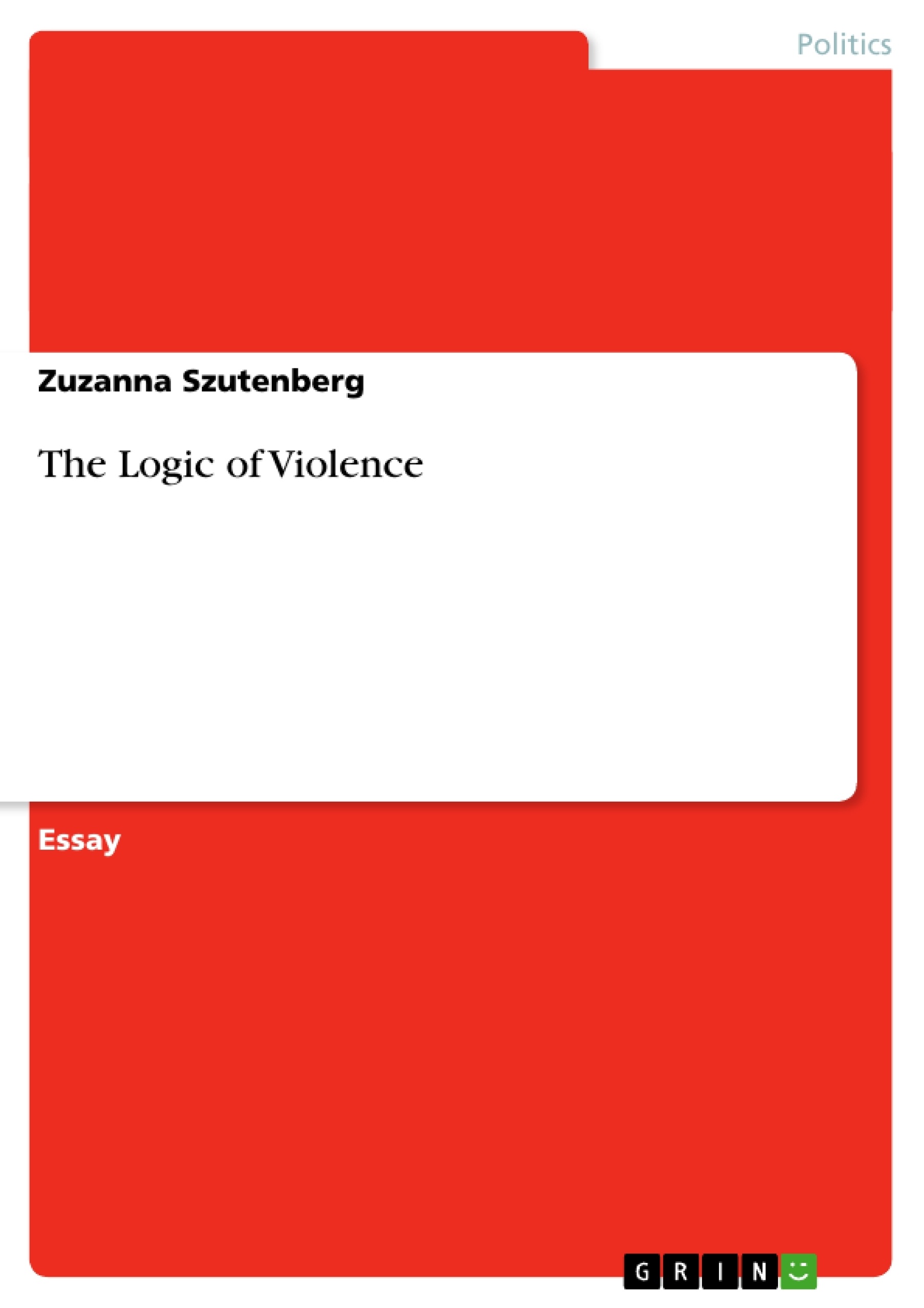QUESTION:
Although the use of violence by and against states displays many features that are specific to particular cultures and situations, there is an underlying ‘logic of violence’ that takes a remarkably similar form in a multitude of different contexts.
ABSTRACT:
For the question at hand – a very complex question – it seems of paramount importance to disentangle its individual components before discovering its coherences.
(...) I shall proceed as follows: First, I will present my understanding of logic – the underlying current giving this paper its direction and drive. Still in the first part, I shall introduce and define various forms of large-scale violence to be kept inside the epistemological frame of this essay. Secondly, this paper will elaborate on ‘the doer behind the deed’. I shall introduce the philosophical traditions and formal features of contemporary states, laying the ground for the contemplation of violence by and against states, government-sponsored and stateperpetrated
crime. Furthermore, to shed light on the ramifications of violence between the so called First and Third World and in order to provide a link between the general and the specific, this paper would expose the international involvement in criminal structures and violent agency. Drawing on the recurrent narratives and forms of violence discussed in the first two parts, the third section will deepen the dynamics of structures and resources that resurface in various contexts of large scale violence. The chosen examples will deal with the ambivalence of legal control and discursive power in their capacity as supportive features to instigate violence.
This essay will conclude on contemplations which elude from a smooth narrative. In my conclusion I should summarize the main arguments and outline the implications resulting from the supposition of a logic of violence. The final part shall also provide an outlook to
some of the many remaining challenges in the context of international human rights and supranational criminology and their pursuit to stop violence.
Inhaltsverzeichnis (Table of Contents)
- Introduction
- Definitions
- Logic, Violence and Evil
- Large Scale Violence – War, Civil War, Terrorism and Genocide
- Terrorism
- Genocide
- The Doer behind the Deed
- The State
- State Crime and Terror, Forced Compliance and Anomie
- State Crime
- Forced Compliance
- Anomie
- The Role of Culture and Social Structures
- Global Networks of Violence
- Social Structures and the Logic of Violence
- Discursive Power and Social Structures
- The Ambivalence of Legal Control
- The Logic of Violence – A Discussion
Zielsetzung und Themenschwerpunkte (Objectives and Key Themes)
This essay explores the concept of a "logic of violence," arguing that despite cultural and situational variations, violence by and against states exhibits a remarkably similar underlying structure. The essay aims to disentangle the complexities of violence, analyze its components, and investigate the role of states, cultural narratives, and social structures in perpetuating it.
- The underlying logic of violence as a structural arrangement.
- The role of the state in perpetuating violence, including its use of legitimate violence and its ideological narratives of sovereignty and nationalism.
- The interconnectedness of state crime, terrorism, and genocide, and their connection to broader social structures.
- The impact of cultural narratives and social structures on the prevalence and forms of violence.
- The ambivalence of legal control and its potential to both mitigate and exacerbate violence.
Zusammenfassung der Kapitel (Chapter Summaries)
The introduction establishes the essay's central argument: that a discernible "logic of violence" underlies various forms of violence by and against states. This logic, the essay contends, is characterized by a structural arrangement that simultaneously distances and connects individuals from violence.
The second part delves into definitions of logic, violence, and evil. Violence is defined as the deliberate infliction of harm, encompassing physical and symbolic acts. The essay then distinguishes between different forms of large-scale violence, including war, civil war, terrorism, and genocide.
The third part examines the role of the state in perpetuating violence. It explores Max Weber's concept of the state and its relationship to legitimate violence, sovereignty, and nationalism. The essay highlights how these components can be intertwined to facilitate large-scale violence.
Schlüsselwörter (Keywords)
The main keywords of this text revolve around the complex relationship between violence, the state, and social structures. Key themes include the "logic of violence," state crime, terrorism, genocide, sovereignty, nationalism, and the role of cultural narratives in shaping violent practices. The essay also explores the interconnectedness of various forms of violence and their impact on global networks of violence.
- Arbeit zitieren
- Zuzanna Szutenberg (Autor:in), 2012, The Logic of Violence, München, GRIN Verlag, https://www.grin.com/document/201548



